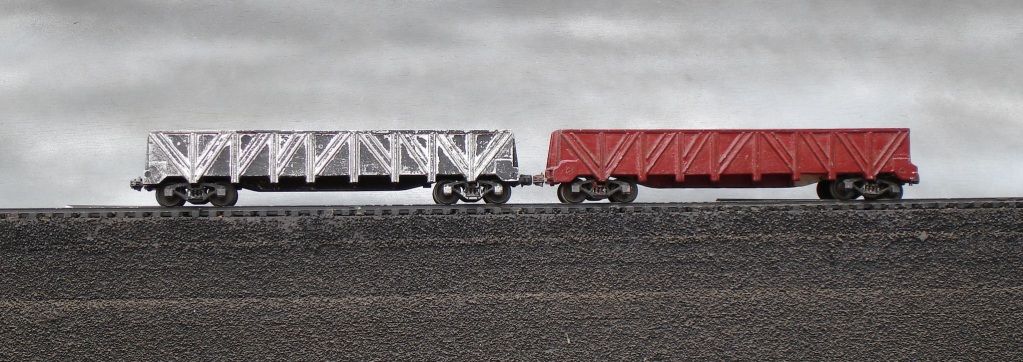Gondolas are highly versatile open top freight cars useful for carrying bulk commodities or manufactured goods that do not need weather protection. The earliest gondolas were little more than flat cars with added wooden sides and ends to prevent material from shifting off the car while in transit. Later, some gondolas received modifications to suite them for hauling particular commodities. Those modifications include removable covers to provide weather protection to lading and extended sides to accommodate full capacity loads of low density materials. Modern gondolas are often designed for maximum efficiency when dedicated to hauling a specific commodity.
Let's take a look at contemporary mass produced O scale gondola models form the oldest to the most modern prototypes.
The Weaver 40 foot gondola is a recently released model of an early gondola created by applying wood sides and ends to a flat car. If you model the period from about 1940 or later consider using this type of car in company service. Place one or more near your locomotive service facility ash pit or use them on a work train as a material car or crane tender.

The Atlas USRA gondola is made from tooling originally used by Intermountain to produce kits and ready to run models. The USRA gondola design is a composite wood and steel car and was popular with railroads and car builders from the WW I era to the 1920's. Many remained in revenue service into the 1940s and 50s. I have an original Intermountain USRA Gondola as well as the Atlas version. Atlas has done a commendable job of retaining a high level of detail while making many of the detail parts less fragile and adding diecast trucks.

In the first half of the 20th century many railroads, particularly those in the western United States, chose to purchase a type a gondola that offered maximum versatility. By taking a gondola similar to the USRA design and adding a drop bottom that emptied toward the outside of a car railroads had the ability to carry all the loads normally handled by ordinary gondolas and also had the ability to be unloaded by gravity like a hopper car. Western roads liked this type of car for its ability to handle logs and lumber as well as gravel and coal. With the addition of extended wooden sides the drop bottom type gondola found use hauling lower density loads like wood chips and sugar beets. The Southern Pacific was noted for using composite wood and steel drop bottom gondolas into the 1980s for sugar beet service.
MTH introduced both composite and all steel drop bottom gondolas in their 2009 Volume 2 catalog.
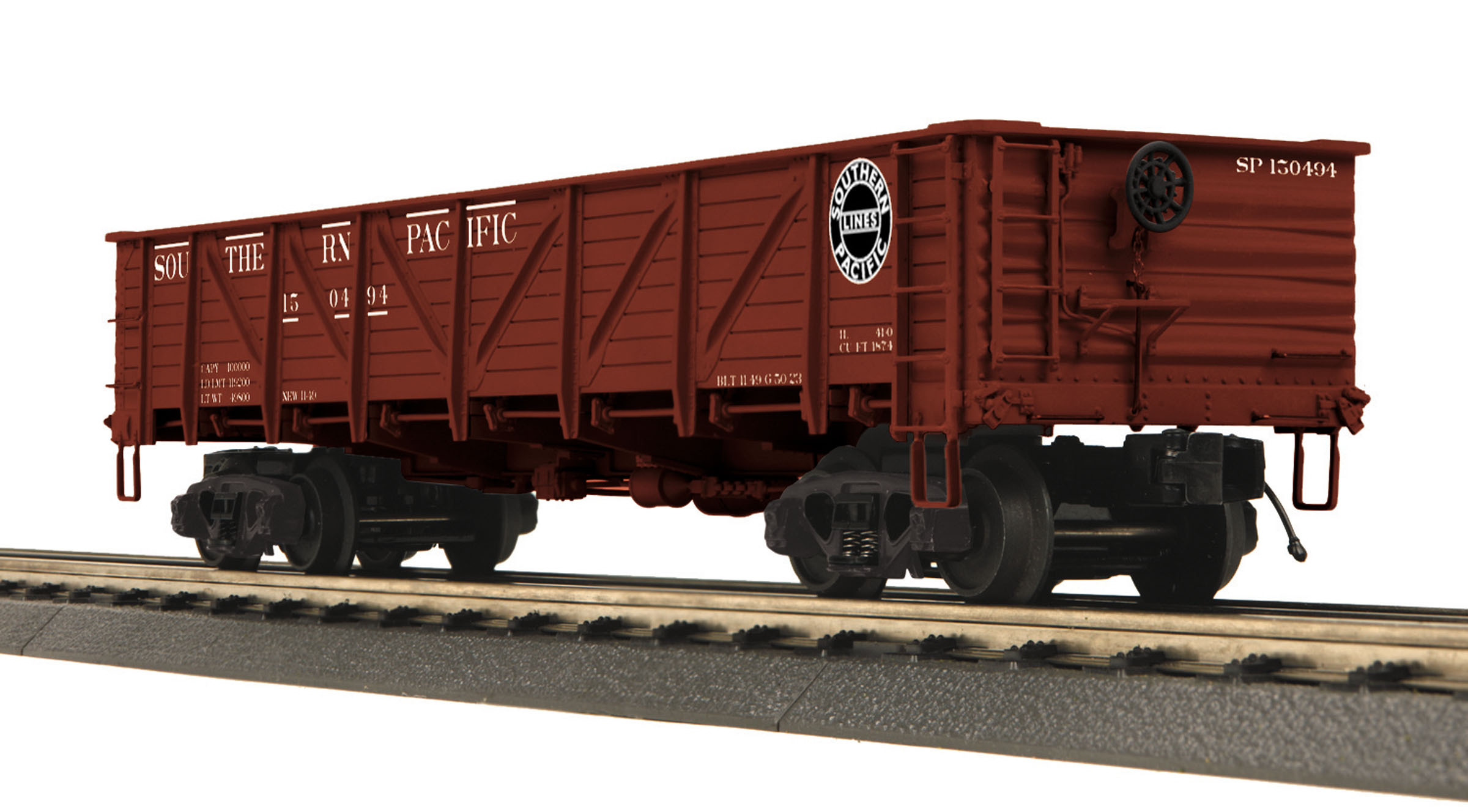
The Western Pacific and SP&S all steel drop bottom gondolas from Petersen Supply are the first MTH freight cars to be sold in a factory built 2 rail configuration.
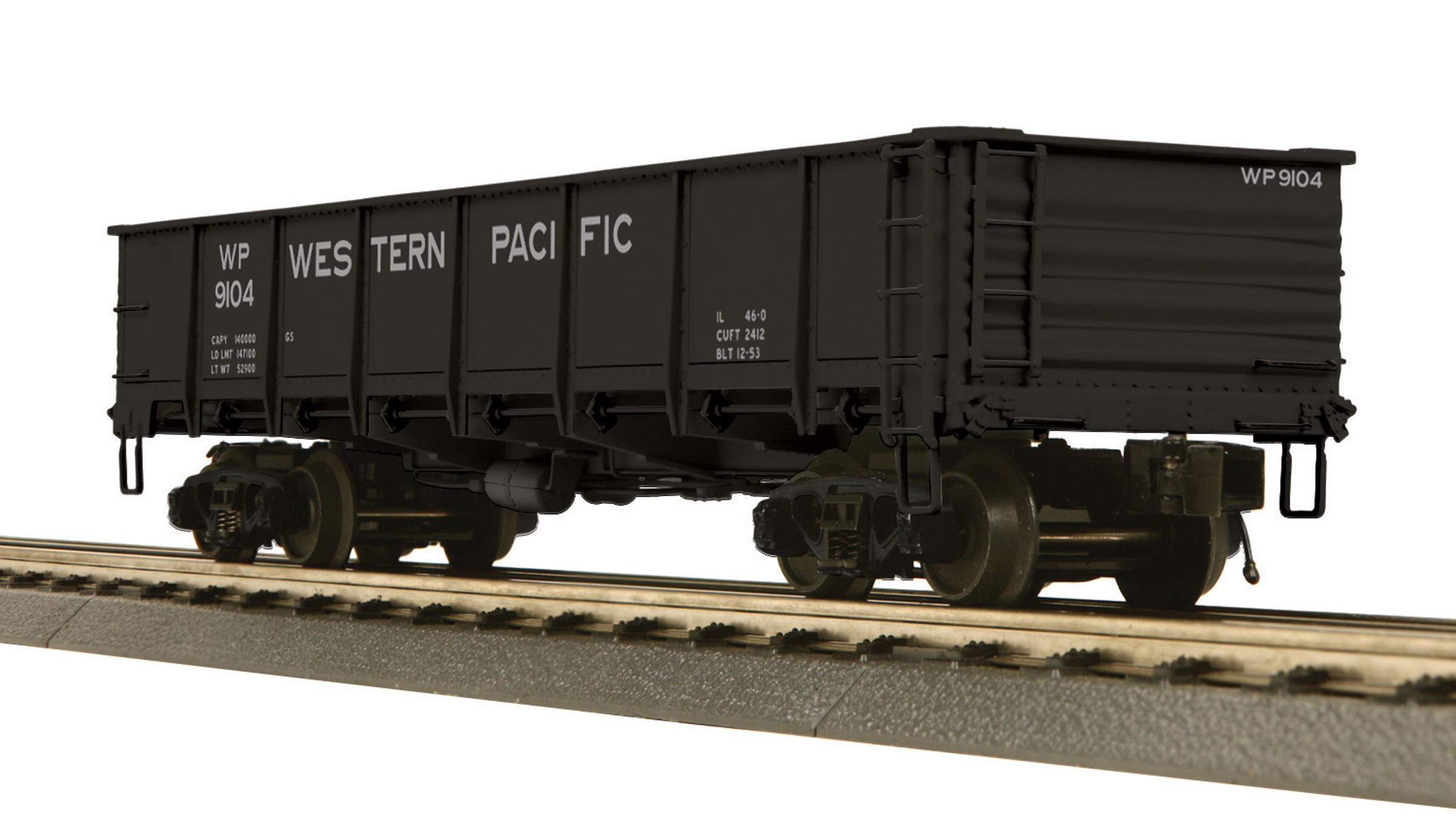
By the 1930s shippers, especially in the steel industry, needed longer gondolas to handle larger loads. Railroads needed these cars to be of sturdy construction to hold up in rugged service. In response to these demanding requirements the all steel 52'6” interior length gondola became the car of choice until the late 20th century. We have several 52' 6” gondola models to chose from in O scale.
MTH introduced their model of a 52” 6' gondola in 1997 Volume 1 catalog. They have been offered in a wide variety of road names as well as with covers or scrap wheel, pipe, coil steel, steel wire, LCL container and cement container loads. Recent versions feature improved details, upgraded trucks and underframes designed for Kadee coupler mounting.
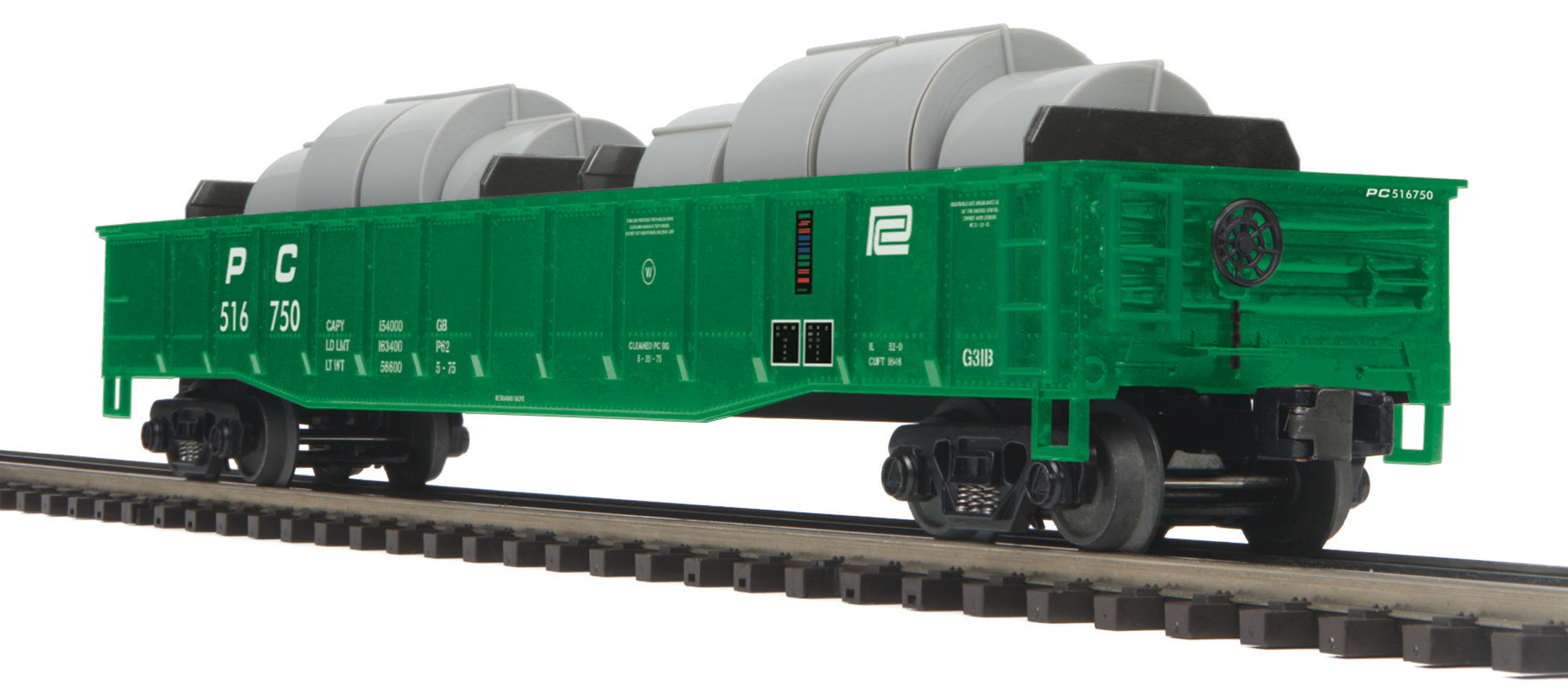
K-Line made their 52' 6” gondola from diecast metal. It was offered starting in 1999 with scrap loads, steel coil loads, bulkheads, high wood sides, removable load covers. With the scrap load it weighs in at a hefty 34 ounces but is free rolling on level track. If you have grades to contend with on your layout consider each diecast gondola as two standard weight 40 foot O scale cars when figuring train tonnage and locomotive assignments.
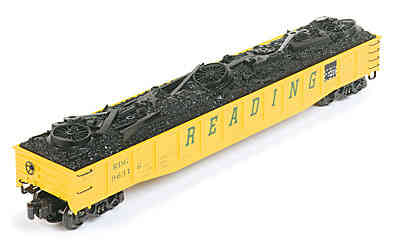
Atlas reintroduced their model of an ACF built 52' 6” gondola with the launch of the O scale Trainman line in 2005.

During WW II the U.S. Government controlled the allocation of steel and restricted its use where other materials could be substituted. Many freight cars built in the middle of the war reverted to composite wood and steel construction. Weaver modeled the war emergency gondolas with composite wood and steel sides and drop ends. Drop ends were a common optional feature on gondolas. They could be used to facilitate loading and unloading or to allow a load longer than the interior of the car to be carried by dropping one or both ends and using buffer flat cars to protect the overhanging portion of the load. Atlas has added these cars to their Trainman line.

The Lionel PS-5 gondola is a model based on Pullman-Standard's 52' 6' gondola from their post WW II line of freight cars built making extensive use of welded construction. The Lionel model features an excellent level of detail and operating drop ends. They have been offered as a plain car or with removable covers or coke containers since their 2002 debut. Recently Lionel has offered the PS-5 gondolas with extra long loads in a two car set with a flat car.

Lionel added a new 65 foot mill gondola to their scale freight car offerings in 2017. It provides O scalers with a mass produced model of a modern 100 ton gon.
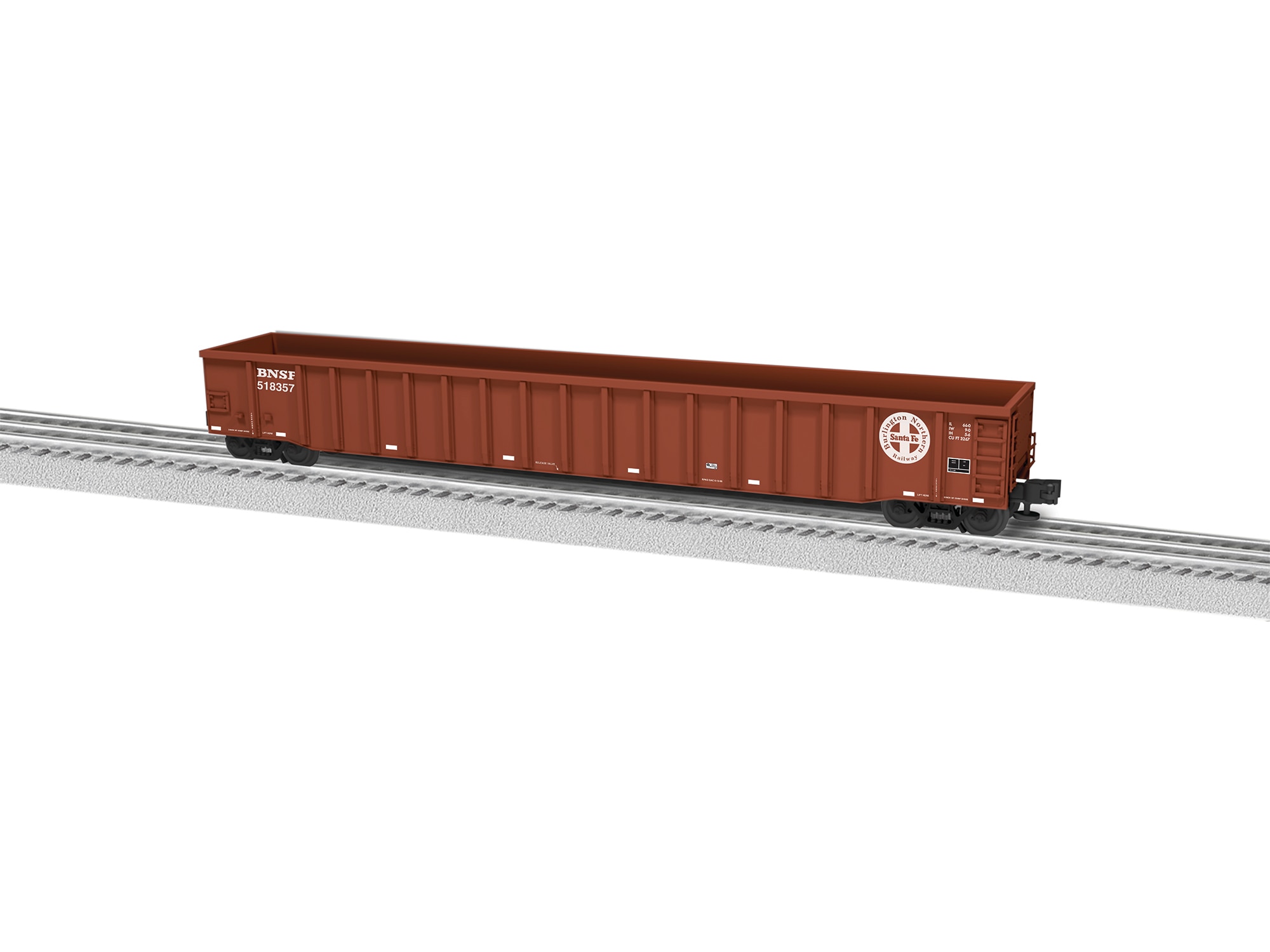
Many gondolas have been modified with higher sides to handle larger volumes on lower density commodities. Beginning in the 1960s some gondolas have been constructed with particular low density commodities in mind.
The MTH wood chip gondola was introduced in the 1998 Volume 1 catalog. They were one of the first models of a very large modern freight car to enter the market and helped pave the way for more BIG scale cars like 50 and 60 foot high cube box cars and even longer flat cars and auto racks.

MTH Coalporter gondola was the first plastic model of a modern coal gondola to enter the market when it was announced in the MTH Spring 1996 catalog. Over the years they have received enhanced details, upgraded trucks and Kadee mounting pads. Kadee mounting pads were advertised in 2010 but reported on cars in the 2008 Volume I catalog. They have been sold as single cars and in numerous six car sets. Two different numbers on separate sale cars plus two differently numbered six cars sets make for 14 differently numbered cars available per road name from the same catalog. If you want to model a modern unit train these cars offer an excellent way to do it.
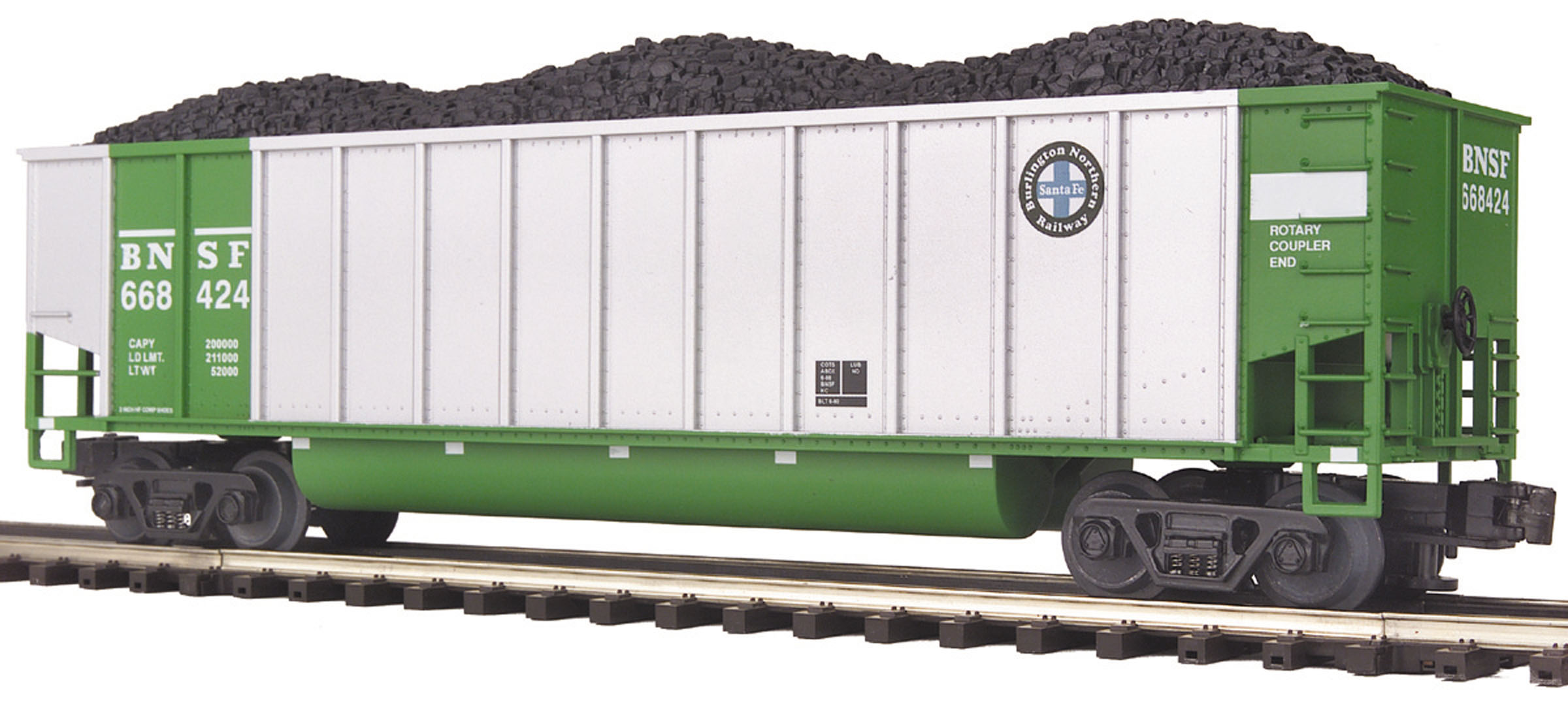
The Lionel bathtub gondola was introduced in their 2001 Volume 2 catalog. They feature rotary couplers and are designed to operate with the Lionel rotary car dumper.

Atlas announced their model of the ACF Coalveyor gondola for late 2004 delivery. The models of this 1980s prototype feature rotating coupler on one end of 3 rail models and 100 ton roller bearing trucks with rotating bearing caps.

If anyone has any additions or corrections to offer please let me know. And if you would like to comment on the details of individual models I would like to hear your opinions.
Let's see photos of your favorite O scale gondolas.
For information on other types of O scale freight cars see the O Scale Freight Car Guide linked below.
https://ogrforum.com/t...le-freight-car-guide



